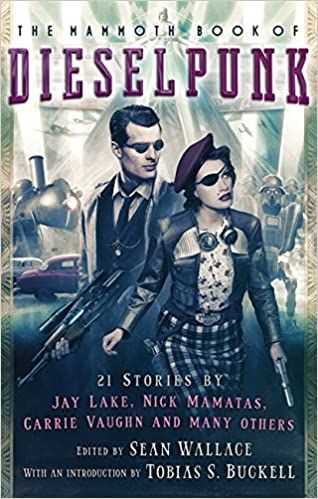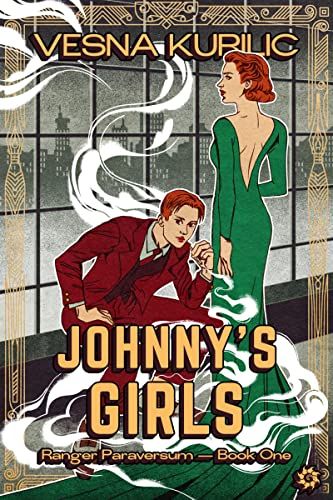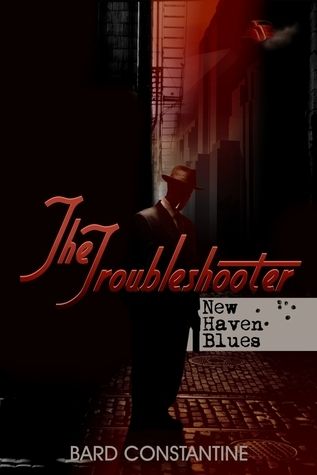Ah, dieselpunk. Hearing the term drums up images of classic action movies like Mad Max and Tank Girl, but it might surprise you to learn that it wasn’t actually an official literary sub-genre until 2001, when the term was first coined by Lewis Pollak in reference to the video game Children of the Sun.
If you are unfamiliar with the term or it’s origins, you don’t have to look that far back in history. Most of dieselpunk is set in, or draws inspiration from the 1920s-40s, specifically between World Wars I and II. Some hallmarks of the sub-genre include advanced machinery, aviation, robotics, and of course, diesel as a source of power.
Another big part of dieselpunk is the concept of alternate history and dystopian futures. These two themes aren’t always present in tandem, but often one leads to the other. It’s not hard to imagine why something like dieselpunk would emerge during a period of such upheaval as both world wars. The second industrial revolution was a recent occurrence, economic depression was rampant, and weaponry was under development.
All of that explains why dieselpunk came to be, but it’s time to examine what it actually is, what some of the best examples are, and the impact it has on the science fiction genre at large. So let’s get into it.
What is Dieselpunk?
At its very core, dieselpunk is all about the exploration and blending of historical fiction and science fiction. It usually asks the question “If things in the past had turned out differently, what would technology look like today?”
Often this line of questioning involves aviation and robotics. With planes being adapted to be war machines during World War I, it’s perfectly natural to wonder what else they could have been if a war hadn’t occurred, or what they would have looked like if they had been around longer when the wars came about. How might they have been used differently?
The same goes for other gas powered machines, hence the name “dieselpunk”. It asks the question: in another timeline, what weapons of war and mass destruction could have been created to change the tides of the war? And what could have been developed if we had invested more time in the study of diesel engine rather than nuclear fission or atomic structures? Dieselpunk attempts to answer these questions.
The Best Dieselpunk Books
There are some wonderful classic dieselpunk books out there, as well as some exciting new additions to the genre. If you’re looking to get started, there’s a lot of books I can recommend.
The Company Man by Robert Jackson BennettIf you’re looking for something published in the earlier days of the sub-genre, I can’t recommend The Company Man by Robert Jackson Bennett highly enough. It’s a fast paced thriller with gunships, imaginative weapons, and alternative history. Another great more recently published example is the Leviathan series by Scott Westerfeld, of Uglies fame. |

The Mammoth Book of Dieselpunk edited by Sean WallaceIf you’re a short story fan, there’s no better resource for great dieselpunk stories than The Mammoth Book of Dieselpunk. This work features short stories from some of the great science fiction writers from around the world, including “Into the Sky” by Joseph Ng, and provides a great scope for what you can expect from a dieselpunk book. It’s just such a great collection. |

Johnny’s Girls by Vesna KurilicThere are of course some amazing books published in the past five years in the dieselpunk sub-genre. One of my favorites is Johnny’s Girls, which is full of spy-craft, doppelgängers, and futuristic science. Another phenomenal example of dieselpunk comes from War Stories: New Military Science Fiction. This collection, including a story by Ken Liu, looks at the military side of dieselpunk and asks fascinating questions about technology and the military industrial complex. |

The Troubleshooter: New Haven Blues by Bard ConstantineIf you’re looking for a new Dieselpunk author to dig into, you have to check out Bard Constantine, AKA Lewis Knight. New Haven Blues in particular is a wonderful testament to the genre. It’s got weird tech, shadowy figures, and has a delightful noir vibe to it. |
Isn’t This Kind of Like Steampunk?
Sure. A little bit. Steampunk is all about using coal and heat to produce electricity. It also uses advanced science fiction gadgets and often looks at what history could have been. The main difference between these two sub-genres doesn’t lie just in the energy source used (gas vs. coal). It also focuses on different points in history. Steampunk relies heavily on the Victorian aesthetic, while dieselpunk focuses on a period of history nearly a full century after the Victorian Era.
In fact, it’s easy to draw a line in science fiction sub-genre history. Steampunk leads to dieselpunk which then leads to cyberpunk. Though some traits are shared among their sub-genres, they each follow a different period of history. Or, in the case of cyberpunk, the future.
What’s All This Then?
When first starting out reading in the science fiction genre, there are a lot of different books and sub-genres to sift through. But once you’ve found your niche, you’ll know exactly the books to look for that you will love.
Dieselpunk is a grimy and wonderful way at looking at early technology and innovation. It offers a whole plethora of world to explore, and it takes you both back in time and into the future.
If you’re interested in similar books to the ones I’ve listed, be sure to read up on both steampunk books and cyberpunk. There’s so much to love, and I can’t wait for you to read some of the greats in early science fiction. As always, happy reading!







